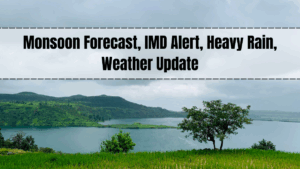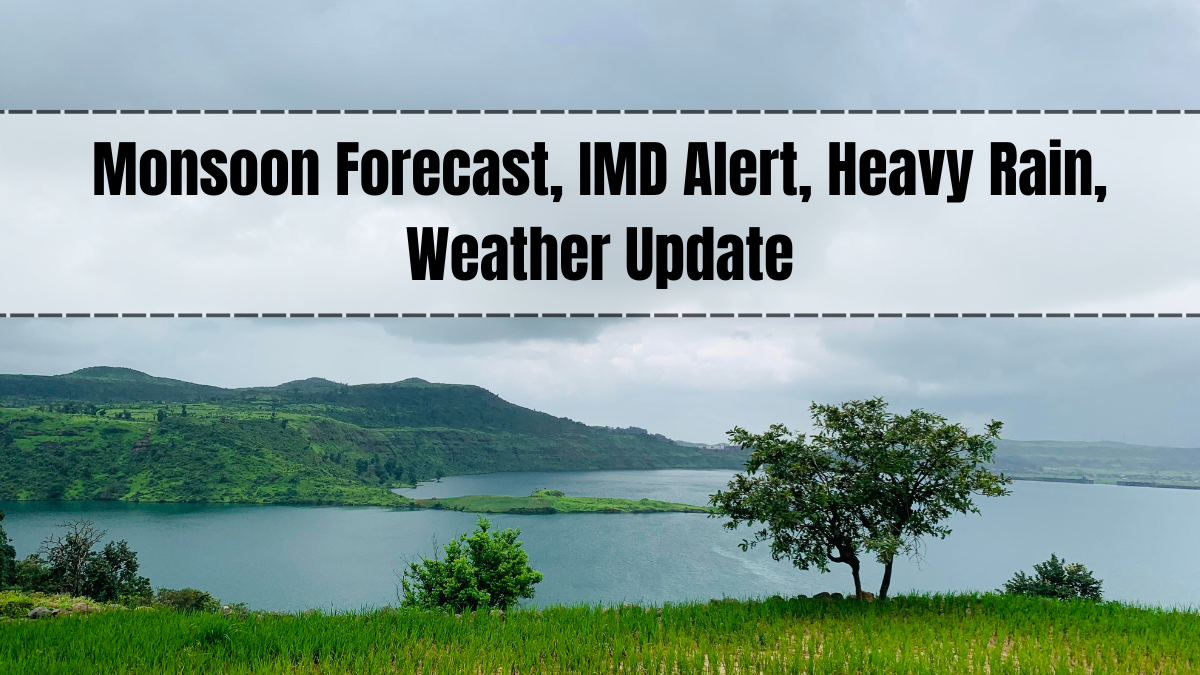The August Monsoon Forecast for 2025 issued by the India Meteorological Department (IMD) has brought vital updates for millions across the country. With heavy rainfall warnings in place for multiple states, this month is shaping up to be both a blessing for agriculture and a challenge for urban and rural infrastructure. The IMD’s detailed advisory indicates that strong monsoon currents from both the Bay of Bengal and the Arabian Sea will bring widespread showers, with several regions expected to receive significantly above-average rainfall. While this is great news for farmers and water reservoirs, the associated risks such as floods, landslides, and travel disruptions cannot be overlooked.

IMD’s August 2025 Rainfall Outlook
According to the latest IMD update, the August Monsoon Forecast shows that low-pressure systems are actively forming over the Bay of Bengal, supported by moisture-laden winds from the Arabian Sea. These combined systems are expected to sustain continuous rainfall spells across eastern, central, and southern India. The forecast also predicts that parts of the Himalayan region, including Uttarakhand and Himachal Pradesh, will see intense downpours that could trigger landslides. On the other hand, western states like Gujarat and Rajasthan may receive periodic heavy showers, helping reduce earlier rainfall deficits.
States Under Heavy Rainfall Warning
The IMD’s heavy rainfall warning is directed at several states that are most likely to experience intense monsoon activity this month.
-
Maharashtra – The Konkan, Madhya Maharashtra, and Vidarbha regions will face very heavy rainfall, particularly during the first half of the month.
-
Kerala & Karnataka – Coastal and ghat areas will witness continuous showers, increasing the risk of localized flooding.
-
Odisha & West Bengal – Low-lying areas in these states are prone to inundation due to high-intensity rainfall.
-
Assam & Meghalaya – The hilly terrains are vulnerable to landslides as a result of prolonged wet spells.
The IMD has urged local authorities to remain prepared for quick emergency response, while citizens are advised to follow weather updates closely.
Agricultural Impact
For the agricultural sector, the August Monsoon Forecast offers timely relief, especially in rain-fed areas. The rainfall will benefit paddy, maize, pulses, and sugarcane crops by replenishing soil moisture and reducing irrigation dependency. In states like Punjab, Haryana, and Uttar Pradesh, the late monsoon boost will help in sustaining healthy crop growth for the season. Furthermore, the consistent rainfall will recharge reservoirs, canals, and groundwater tables, ensuring water availability for the coming months. This is particularly beneficial for states that faced dry spells in June and July.
Urban Flooding Concerns
While rural areas may rejoice, urban regions are bracing for challenges. Cities like Mumbai, Bengaluru, and Kolkata are at higher risk of waterlogging due to inadequate drainage systems. Past monsoon seasons have shown that intense rain over short durations can paralyze traffic and cause infrastructure damage. In anticipation, municipal corporations have begun clearing stormwater drains, deploying pumps in low-lying areas, and preparing disaster management teams for quick deployment.
Transportation and Travel Disruptions
The heavy rainfall patterns predicted in the August Monsoon Forecast could impact all major modes of transport. Road transport in flood-prone areas may experience blockages due to waterlogging or landslides. Rail services in eastern and coastal regions may be delayed, while certain airports could see temporary disruptions in flight schedules during peak rainfall hours. Authorities have advised travelers to plan ahead, check weather alerts, and avoid unnecessary journeys during severe weather conditions.
Public Safety Measures
With the IMD warning in effect, safety remains the top priority. Citizens are urged to:
-
Stay indoors during periods of heavy rain.
-
Avoid crossing waterlogged or flooded roads.
-
Keep an emergency kit with essentials like food, water, medicines, and flashlights.
-
Follow IMD alerts and updates through official channels.
-
Ensure proper drainage around homes to prevent water accumulation.
These preventive steps are especially crucial in areas prone to flash floods and landslides.
Economic and Social Implications
The August Monsoon Forecast will have ripple effects across multiple sectors. Agriculture will benefit from improved yields, which could stabilize food prices. On the flip side, extreme weather may disrupt supply chains, especially in perishable goods. The construction industry might experience delays due to rain-related work stoppages, while tourism in coastal and hill regions could see temporary slowdowns due to travel advisories.
Conclusion
The IMD’s August 2025 update paints a picture of a vigorous monsoon phase that will shape the month’s agricultural output, water storage levels, and daily life for millions. The August Monsoon Forecast is a reminder of nature’s dual role — bringing prosperity and challenges in equal measure. Staying informed, prepared, and cooperative with local authorities will be key to navigating this rainy season safely and effectively.
FAQs
Which states are under the IMD’s heavy rainfall warning for August 2025?
Maharashtra, Kerala, Karnataka, Odisha, West Bengal, Assam, and Meghalaya are among the key states under alert.
How will this rainfall affect agriculture?
It will improve soil moisture, benefit major crops like paddy and pulses, and replenish reservoirs in rain-fed areas.
What are the main flood-prone regions this month?
Coastal areas, low-lying districts in Odisha and West Bengal, and hilly terrains in the Northeast are most vulnerable.
How should urban residents prepare for heavy rainfall?
By securing homes, avoiding waterlogged routes, and following official weather advisories.
Will transport services be affected?
Yes, road, rail, and air travel in affected areas may face delays or temporary disruptions during peak rainfall periods.
Click here to know more.
